June 03, 2021
History of the Civic Theatre
The Lyric Opera House has been a Chicago landmark since it first opened in 1929, but did you know that the block-long Civic Opera Building originally held two theaters? Nestled behind the back wall of the Lyric Opera House, the Civic Theatre was a historical mainstay for the Chicago arts sector. Known as Chicago’s “jewel box,” the Civic Theatre played a significant role in legitimizing the city as a theater and dance hub and is remembered for its world premieres, innovative productions, Art Deco decor, and cozy atmosphere. Lyric’s upcoming musical theater cabaret concert, The New Classics: Songs from the New Golden Age of Musical Theater, was filmed in the space that once was the stage of the 878-seat Civic Theatre; after it was purchased by Lyric Opera of Chicago in 1993, it became the expanded backstage and rehearsal space of the opera company.
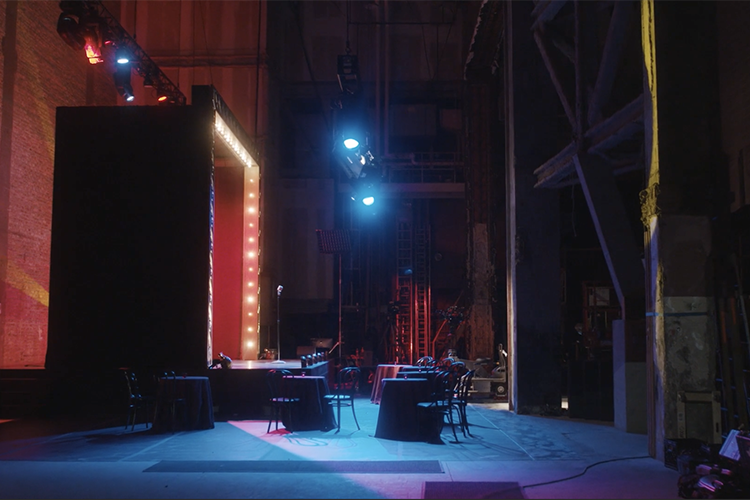
Behind the back wall of the Lyric Opera House, where The New Classics was filmed.
The theater opened on Nov. 11, 1929, with Fritz Leiber in the title role of Hamlet, the first production of the aspiring Chicago Civic Shakespeare Society. But the Civic Theatre reached its peak 15 years later with the world premiere of Tennessee Williams’s The Glass Menagerie, which opened Dec. 26, 1944, starring Eddie Dowling, Julie Haydon, Anthony Ross, and the incomparable American actress Laurette Taylor. Here is part of the review written by Chicago Tribune critic Claudia Cassidy, which helped put the Civic Theatre on the map:
“Too many theatrical bubbles burst in the blowing, but `The Glass Menagerie' holds in its shadowed fragility the stamina of success. This brand new play, which turned the Civic theater into a place of steadily increasing enchantment last night, is still fluid with change, but it is vividly written, and in the main superbly acted. Paradoxically, it is a dream in the dust and a tough little play that knows people and how they tick. Etched in the shadows of a man's memory, it comes alive in theater terms of words, motion, lighting, and music. If it is your play, as it is mine, it reaches out tentacles, first tentative, then gripping and you are caught in its spell.”
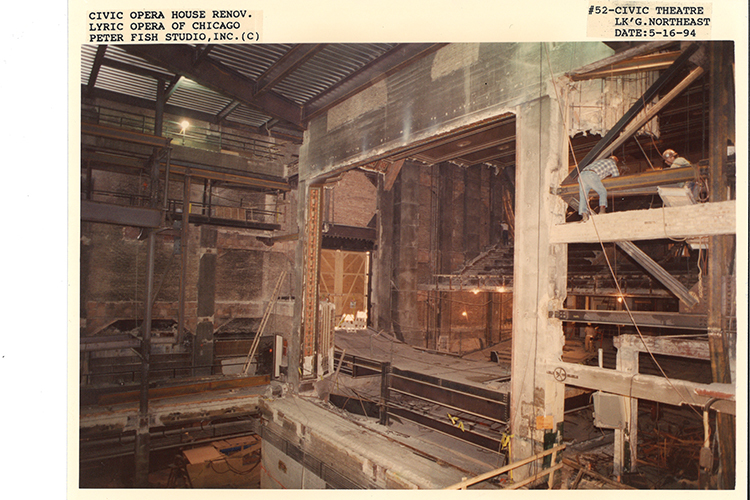
The Civic Theatre renovations in the 1990s that transformed the historical theater into Lyric Opera of Chicago's enhanced backstage space.
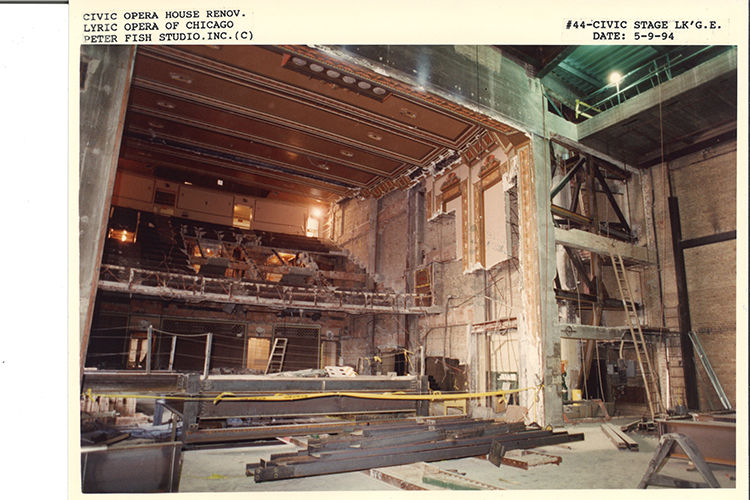
The view from what was the stage of the Civic Theatre into the balcony.
In 1945 the Civic Theatre presented the all-Black drama Anna Lucasta in an impressive 40-week run; the next year saw the Midwest film premiere of Laurence Olivier’s film adaptation of Henry V. In 1948, the theater was used as a studio for WENR-TV (ABC) where Chicago-original shows such as The Breakfast Club and Super Circus were filmed.
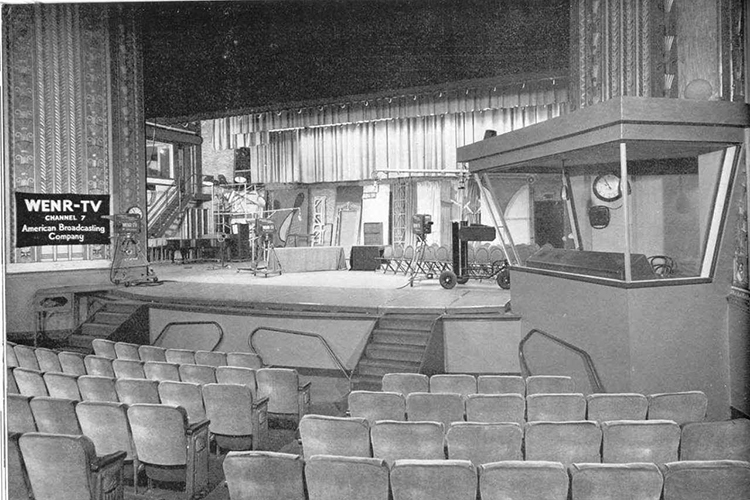
The Civic Theatre, transformed into an ABC televistion recording studio in 1948.
In 1959, a new producer on the scene, Alan Carr, leased the theater, presenting the Broadway comedy The Girls in 509 and a Tennessee Williams double bill of Garden District and Suddenly Last Summer, the latter starring Diana Barrymore in a stunning performance. In the following decades, the space was also used by the Harper Dance Festival, Wisdom Bridge Theatre, and an array of touring companies, including Pilobilus.
After a last-hurrah run of the Andew Lloyd Webber musical Aspects of Love in 1992, the Civic Theatre officially closed in 1993, when Lyric Opera of Chicago purchased the theater and backstage space of the Civic Opera Building and commenced a massive three-year renovation. The area once occupied by the Civic Theatre was converted to a stage-sized rehearsal room, dressing rooms, and scenery handling space (including a new loading entrance and truck lift) for Lyric Opera of Chicago. All that remains of the original Civic Theatre in the backstage space of Lyric is a fragment of the theater’s proscenium.
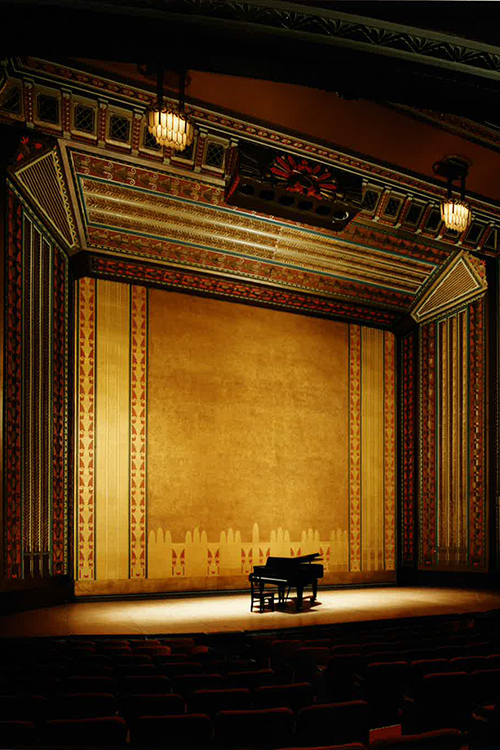
The stage of the historic Civic Theatre.
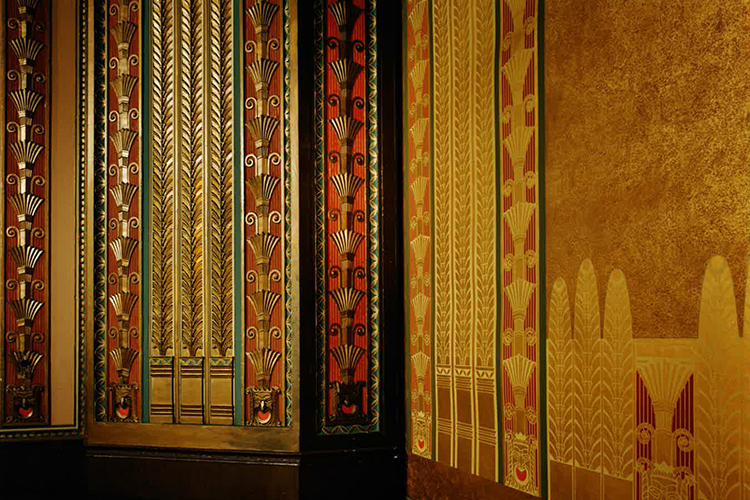
David Chase mentions in The New Classics that the proscenium hanging in the rafters is the only remaining original piece of the Civic Theatre. Here are the details of the original proscenium up close.
Passersby can still read the words “THE CIVIC THEATRE” and year “MCMXXVII” chiseled into the stonework above the entrance on the northeast corner of the Civic Opera Building. As audiences watch The New Classics: Songs from the New Golden Age of Musical Theater, they’ll see what looks to be a cozy cabaret with an exposed brick wall, occupying a portion of the stage of the former Civic Theatre.
Take a closer look at the space and enjoy an intimate performance of old and new Broadway classics with The New Classics: Songs from the New Golden Age of Musical Theater on June 10 at 7:00pm CT!
Now streaming
The New Classics: Songs from the New Golden Age of Musical Theater
The New Classics: Songs from the New Golden Age of Musical Theater
Take a seat, fire up your biggest screen, and experience a star-studded virtual cabaret featuring some of your favorite Broadway and Lyric voices in the comfort of your own home this June with The New Classics: Songs from the New Golden Age of Musical Theater.

